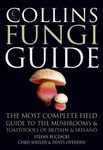Edited By: Baruch Sneh, Suha Jabaji-Hare, Stephen Neate and Gerda Dijst
578 pages, Col & b/w plates, figs, tabs
![Rhizoctonia Species: Taxonomy, Molecular Biology, Ecology, Pathology and Disease Control Rhizoctonia Species: Taxonomy, Molecular Biology, Ecology, Pathology and Disease Control]()
Click to have a closer look
About this book
Contents
Customer reviews
Related titles
About this book
This volume summarizes years of research in the various aspects of the ubiquitous complex group of soil-borne fungi belonging to the anamorph genus Rhizoctonia. Species of Rhizoctonia worldwide cause economically important diseases on most of the world's important plants such as cereals, potato, cotton, sugarbeet, vegetables, ornamentals and trees in nurseries. The subject reviews covered in the book include classic as well as modern approaches to Rhizoctonia research, in: taxonomy and evolution, genetics and pathogenicity, plant-rhizoctonia interactions, ecology, population and disease dynamics, disease occurrence and management in various crops, cultural control, biological control, germplasm for resistance, and chemical and integrated control strategies. It aims to be the standard reference source book on Rhizoctonia for the next decade or more, just as Parmeter et al. (1970) has been in the past. It will be an important publication for Rhizoctonia investigators, plant pathologists, students, extension specialists, crop producers and companies dealing with plant disease control.
Contents
Introduction: The Genus Rhizoctonia; A. Ogoshi. I: Taxonomy and Evolution of Rhizoctonia spp. I.A. Classical Methods. I.B. Biochemical and Molecular Methods. II: Genetics, and Pathogenicity of Rhizoctonia spp. III: Plant-Pathogen Interactions of Rhizoctonia spp. IV: Ecology of Rhizoctonia spp., Population and Disease Dynamics. V: Characterization of Rhizoctonia spp. Isolates, Disease Occurrence and Management in Various Crops. VI: Control of Disease Caused by Rhizoctonia Species. VI.A. Cultural Control. VI.B. Biological Control. VI.C. Plant Germ Plasm for Resistance Against Rhizoctonia. VI.D. Chemical Disease Control of Rhizoctonia Species. VI.E. Integrated Control of Rhizoctonia Species.
Customer Reviews
Edited By: Baruch Sneh, Suha Jabaji-Hare, Stephen Neate and Gerda Dijst
578 pages, Col & b/w plates, figs, tabs



































